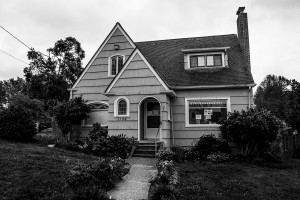Submitted by Thurston County Public Health & Social Services
 Saving enough money to support ourselves throughout our golden years is key to planning for a comfortable retirement. Retirement planning should also include preparing for where we live when we retire, as well as when we age. Because of healthier lifestyle choices and medical advancements, more of us are choosing to “age in place” in our pre-retirement homes.
Saving enough money to support ourselves throughout our golden years is key to planning for a comfortable retirement. Retirement planning should also include preparing for where we live when we retire, as well as when we age. Because of healthier lifestyle choices and medical advancements, more of us are choosing to “age in place” in our pre-retirement homes.
Since we are living longer, we need to plan for things we will need for longer than our parents and grandparents did, knowing that the choices we make today will influence how we are able to live in the future. And, although our homes may be paid off by the time we retire, we will still need to maintain our homes after we stop working.
Consider that your home is a system made up of many inter-connected parts that work together. There are structural, electrical, plumbing and mechanical parts that all need to be maintained to keep them in good working order.
When you purchased your home, you probably made payments that included principal, interest, taxes and insurance. You also paid your monthly utility bills (gas, electricity, sewer, water, etc.). But, depending on the age of your home when you bought it, you may not have been investing much into maintaining your home’s systems, because many of them can last 20 years or more. As you enter retirement, you may no longer be making principal and interest payments, but you will still be paying for taxes, insurance, utilities, and repairs and replacements.

If you’ve been in your home for close to 20 years, major systems in your home may be reaching the end of their useful lives. This could mean repairing or replacing the roof, the water system, , the electrical system (panel, outlets, light fixtures), the heating system, the floor coverings and countertops, siding, steps, porches, decks, paint, gutters and downspouts, cabinets, appliances, and the waste disposal system (septic or sewer). Paying for all of these on a fixed income will require planning ahead.
If we plan to stay in our homes as we age, we also need to think about and plan for accessibility issues, which may include adding exterior ramps, grab bars, lever faucets, making bathroom modifications, lowering kitchen countertop and appliances, and widening of hallways and doorways. We can also invest in making our homes more energy efficient, fix leaking plumbing and drafty windows, and improving ventilation—these investments will not only help keep our housing costs affordable, but will also help keep us healthy by preventing mold growth and improving indoor air quality. Making these modifications will make us safer and more comfortable in our homes as we grow older, but will take significant financial resources at a time when they are limited.
Planning and saving for future housing system repairs, improving our homes’ energy efficiency and indoor air quality, and making our homes more accessible now—while we are still earning an income—will improve how we live out our golden years. If you can, begin saving some money now; create an emergency fund to address the unforeseen roof leaks or plumbing problems, and start upgrading systems and making your home more accessible. Do this while you are working to prevent problems down the road, when your resources are limited.
Thurston Thrives Housing for Health Strategy calls for creating safe and affordable housing for all in our community—with careful planning, we can get closer toward achieving this goal, one home at a time. Plan, save and prepare your home now so that your retirement can truly be golden.




















































